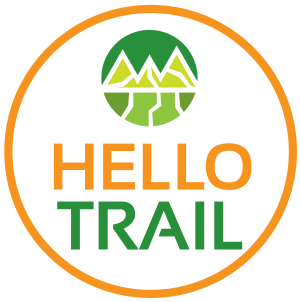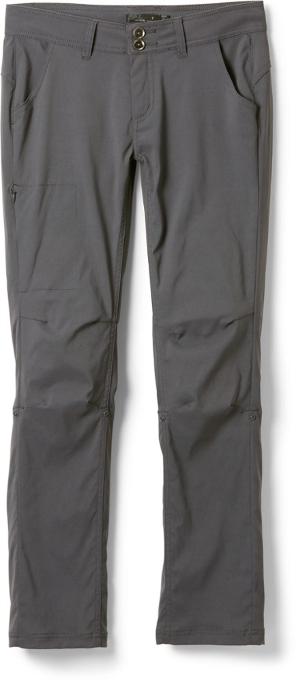You might be under the impression that your boots and backpack are the most essential tools in your hiking gear arsenal — but you can’t forget the role that a good pair of pants or leggings can play.
Pants are your primary line of defense against the elements for the lower half of your body and protect your legs from contact with insects, abrasive plants and even sunburn.
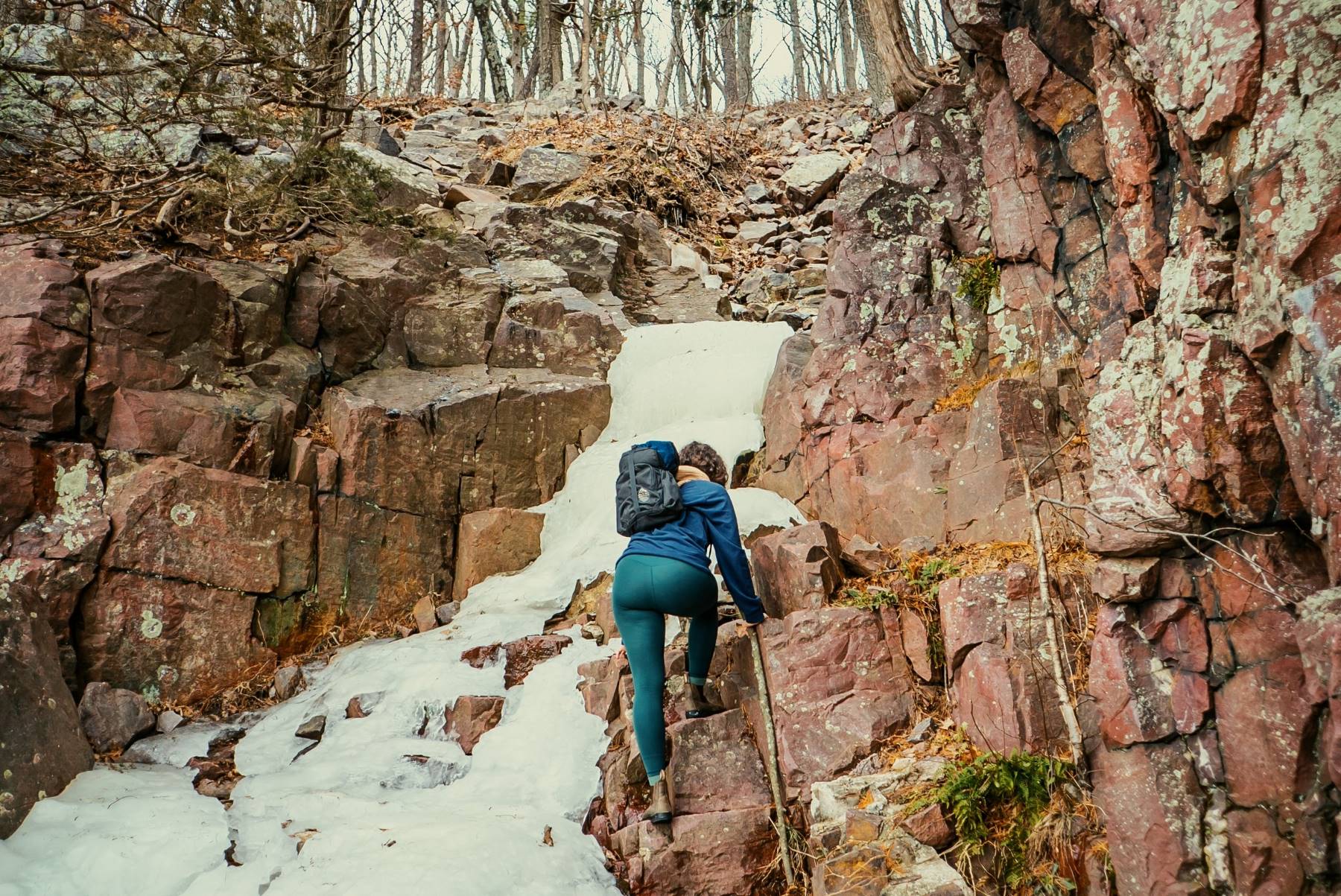
Hiking pants also serve to mitigate the area of contact between your backpack and your hips — determining whether you’re going to be comfortable on a hike or suffer from rubs and hotspots. Let’s take a look at the 5 best women’s hiking pants you can buy in 2023…
HelloTrail® is reader-supported. We may earn a commission, at no additional cost to you, on purchases made from our expert chosen links.
What are the Best Hiking Pants for Women?
Prana Halle and Prana Winter Hallena
The Prana Halle boast their proprietary Stretch Zion fabric, which is stretchy, moisture-wicking, and water-resistant, offering a DWR coating.
An ideal blend of nylon and spandex makes for a wide range of motion, while the articulated knees and mid-rise waistband ensures comfort and proper fit.
There are front hand pockets, back pockets, and a quick-stash pocket at the upper leg.
And the best part…Prana offers tall and short length versions as well!! Being almost 5′ 10″ with a thin athletic build finding pants that go past my shins is a struggle.
The Prana Halle is an ideal three-season pant. For winter hiking and cold climates, you should check out the Prana Winter Hallena pants, providing for an increased amount of insulation.
Pros
– Different length sizing options – Us taller ladies appreciate that
– Roll up feature easily converts these into capris
– Water resistant coating
Cons
– Fits slightly large
– Front pockets are not very deep to get much use out of them
Fjallraven Abisko Tights

If you’re looking for complete range of motion, the Fjallraven Abisko tights deliver in every way.
The stretchy fabric is form-fitting with a full-length cut, offering protection from the sun and abrasive elements.
The wide waistband of the Fjallraven tights provides unmatched comfort beneath a backpack and a gusset allocates increased flexibility.
In addition, there are multiple pockets (YES!) and gear loops to store those items you don’t want to have to dig through your daypack for. Bonus feature? These tights have reinforced knees and rear because you never know when you will need to climb up or slide down the terrain.
Pros
– Thicker than yoga pants which makes them ideal for hiking
– Thigh pockets are big enough to hold snack or a phone
– Formfitting without being restricting
Cons
– Not offered in different lengths (29″ inseam)
– Pricier than some other basic options
Marmot Lobo’s Convertible Pants
The Marmot Lobo’s convertible pants are one of the highest quality three-in-one pants on the market.
The company didn’t skimp on a single feature.
The Lobos are constructed with a lightweight and quick-drying fabric that keeps you cool and comfortable.
Roll up the pants for a 3/4 length fit or zip off the bottom of the pants entirely.

The nylon is paired with elastane, allowing for a full range of motion. In addition, the fabric is DWR coated for water resistance and rated UPF 50, providing for a high level of sun protection.
The Marmot Lobos include a gusset panel, front and rear pockets, and a side zipper pocket. In addition, these pants are part of Marmot’s eco-friendly Upcycle program, so you can feel good about helping the environment as you tread down the trail.
Pros
– Pants, capris, or shorts? Why not have them all in one pant
– Lightweight & Quick drying
Cons
– Not offered in different lengths (32″ inseam)
– Lower rise waist
Marmot Women’s Precip Eco
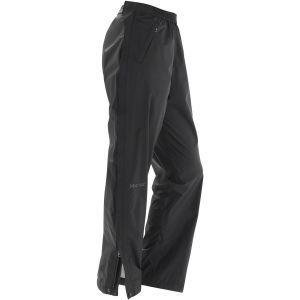
When you’re hiking in relatively wet and rainy conditions, you might want to bring along a pair of rain pants.
While some rain pants are too stifling for hiking, the Marmot Precip pants make for an excellent option.
The improved NanoPro coated fabric is more breathable than ever before — ensuring you’ll stay dry and comfortable mile after mile.
In addition, the lower leg side zips allow you to pull these over your boots or shoes easily. A unique Dry Touch finish next to the skin reduces that stifling feeling often created by hiking in rain pants.
The Marmot Precip pants are 100% seam-sealed, ensuring absolute water and windproofing. When things get too wet for a standard pair of hiking pants, these make an ideal trail companion.
Pros
– Waterproof & Windproof
– Comes in Regular & Long lengths
– Lower sider zipper makes these easy to get on/off over other pants or leggings
Cons
– They are rain pants, so they do make that ‘swooshing’ sound in case that bothers you
– Not ideal for everyday hiking
Columbia Saturday Trail Straight Leg
Perfect for a day hike or a short romp through the backcountry, the Columbia Saturday trail pants are everything you need in a pair of hiking pants.
Columbia’s proprietary Omni-Stretch finish makes for excellent water and dirt resistance.
A 2-way stretch and gusset allow for freedom of movement, while a straight-leg style keeps things simple.
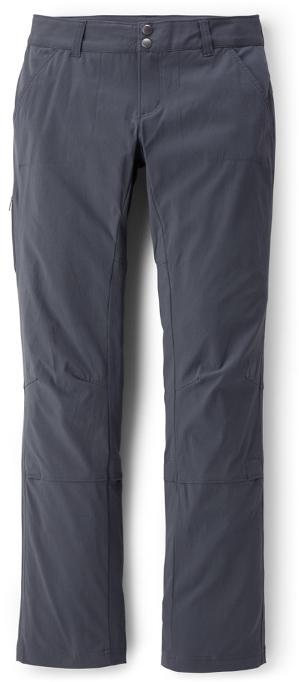
These pants are rated UPF 50, guaranteeing protection from harmful UV rays. The Columbia Saturday Trail pants also roll up into capris, adding versatility to its impressive list of features.
Pros
– Offered in Short/Regular/Long length sizes
– Versatility that makes it easy to go from town to trail and back
– Water-resistant & sun protection
Cons
– Not as breathable as some of the other options
– Like most women’s hiking pants, the front pockets are a dud
Women’s Hiking Pants Buying Guide
Different types of pants
There are so many different types of hiking pants available on the market. To narrow down the right selection for you, first, you should determine the kind of pants that will best suit the hiking categories you will primarily be doing.
Standard pants are your basic long pant, offering a tapered leg that can vary from wide to narrow.
There are also convertible options that allow you to choose between different lengths and styles. This is especially important when you’re hiking through changing weather conditions or different times of the day.
For example, on a hike that begins in the early morning, you might prefer to start in long pants, but by noon when the temperatures have risen, convert to capris or shorts.
Different kinds of convertible options exist. There are roll-up crop pants which are standard long pants with buttons or buckles. These allow you to roll the pants up to capri length and fasten them in a cuffed position.
There are also zippered pants that literally “zip-off” the bottom leg portion, serving as makeshift shorts. These pants tend to zip off above the knee.
Often zippered pants have a roll-up option as well, effectively functioning as a three-in-one pair. Many hikers prefer the versatility of convertible hiking pants, while others don’t mind carrying two separate pairs.
It comes down to personal preference and the type of hiking you will be doing. In addition to pants, hiking tights are a popular option.
Specially designed for fastpacking or trail running, the support and compression offered by tights can help reduce chaffing, provide a greater range of motion, and are designed with moisture-wicking fabrics.
The downsides? Hiking tights are less versatile and can keep you quite a bit warmer than a loose-fitting pair of hiking pants. In addition, you sacrifice your ability to layer underneath, although you can opt to wear a layer on top if the weather gets frigid.
Articulated knees and a gusseted crotch are desirable features, as articulated knees allow for a greater range of motion through the leg and a gusseted crotch protects against chaffing.

What is the best material to choose?
Most hiking pants are constructed with more than 95% nylon while some use polyester. It is recommended you select a pair crafted with a small amount of elastane (spandex) for stretchability.
Hiking tights are made with a higher percentage of elastane, offering the greatest range of motion. How much stretchiness you need in a pair of hiking pants depends on their primary use.
If you’re setting out on a short day hike, you’ll need less stretch than if you’re embarking on a rigorous overnighter or if you plan on scrambling over rocks.
Abrasion Resistance
Many companies have begun incorporating abrasion-resistant materials into their hiking pants to improve functionality in the outdoors. Abrasion-resistant materials, such as ripstop nylon, are ideal when traveling through rough terrain, scrambling, or if you plan on bushwhacking.
These pants tend to be more expensive, but if you’re risking ripping your pants, it could be worth every penny.
Water Resistance
Water-resistance is another popular feature to consider. Most hiking pants offer some degree of water resistance, and some are even treated with DWR (durable water repellent), which helps water bead and roll right off instead of soaking into the fabric.
It’s important to note that this does not make hiking pants waterproof. If you plan on hiking long distances in the rain, it’s recommended you bring along a pair of rain pants explicitly suited for that purpose.
Sun Protection
Sun protection is something else to consider when selecting a pair of hiking pants, depending on the sensitivity of your skin and the possible hot weather conditions you’ll be hiking in.
Many companies include an ultraviolet protection factor (UPF) for their hiking pants, which lets you know how much light can penetrate the fabric.
The higher the rating, the more protection it offers from the sun’s potentially harmful rays. UPF is something to take into consideration especially if your skin burns easily.
Sizing and Fit
After you’ve determined the type of hiking pants best suited for you and the features you want, the most important factor is how well they fit.
You want a pair of pants that are tight enough to stay upright after hours on the trail, but loose enough that your movement isn’t restricted and you don’t develop chaffing or hot spots.
In our experience, a “looser fit” is always going to be preferable over a “tighter fit”. This is primarily because a looser fit provides you the option to layer underneath on cold mornings and guarantees it won’t pinch around the hips, causing the potential for hot spots.
While you want to pay attention to the fit around the knees and the thighs, the fit around the hips is most important because this is where the best day hiking backpacks will typically contact your body.
There is a happy medium between a waistband height that is too high, which can cause fabric bunching beneath your backpack’s hip belt, and too low, offering limited skin protection.
A mid-waist height is ideal. Many people prefer wide-banded hiking tights for this reason, offering plenty of protection from the hip belt of your backpack while their elasticity ensures they remain in place.
Most pants are sized to fit women between 5’3″ and 5’7″ inches in height. If you’re taller or shorter, you may want to consider Tall or Short inseam lengths (I am 5’10”, so I always have to seek pants with ‘tall’ versions).
You can’t go wrong with either of these features — both will considerably improve your comfort.
Wrapping It Up…
While you might first consider your backpack or your favorite pair of hiking boots when you set out on the trail, you can’t forget the importance of a good pair of hiking pants.
They can keep you dry, cool and protect you from a seriously mood-dampening case of poison ivy, not to mention round out your entire hiking outfit.
We did the research for you — so you can spend less time surfing the web and more time outdoors!

